ROOM: The Space magazine is one of the leading magazines on space exploration, technology and industry. At ROOM, we share a common goal – advancement of peaceful space exploration for the benefit of humankind, all while bringing you comprehensive articles on a plethora of contemporary topics. Our authors include researchers and industry leaders from all over the world, which lets us bring you timely and comprehensive information about sputnik kerbal space program.
 August 2016
Polish Space Agency pursues task of developing country’s space expertise
August 2016
Polish Space Agency pursues task of developing country’s space expertise
... programmes relevant to Poland’s national interest and economy. In the exploration and use of outer space technologies, space systems and the application of satellite techniques taking into account the principles of competition for public...many challenges. Among the most important ones are coordinating and leading discussions between the space industry and space law and policy in order to increase Poland’s participation in the international sphere....
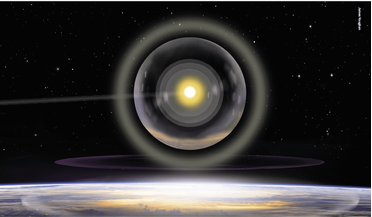 April 2021
Space wars - how they start and how to end them
April 2021
Space wars - how they start and how to end them
The world has come a long way since the first artificial satellite, Sputnik, was launched in 1957. The entire planet now depends on space for economic, military, diplomatic and civilian uses and it is hard to...miscalculation and/or misperceptions. This all depends on senior leaders’ conceptions and/or fears of the threats posed by space systems to their countries’ national security or even their own political futures and, of course, the perception...
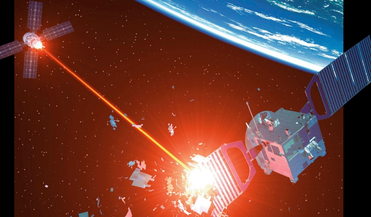 June 2022
Military space – how worried should we be?
June 2022
Military space – how worried should we be?
...Sputnik used a rocket initially designed as an intercontinental ballistic missile and Explorer the A-4 derived Redstone. Ironically, it was a General, also President, Eisenhower who insisted on keeping a blue sea between ‘military’ space and ‘civilian’ space, with an all-civilian space...satellite. By the 1980s, though, the concealment of military space within ‘civilian’ space by all the space powers became less and less feasible or credible A more ...
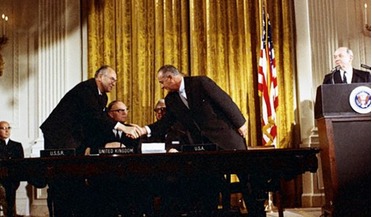 July 2019
Who owns outer space?
July 2019
Who owns outer space?
... an “ideological charter for the Space Age”, having come into force in 1967 amidst the tense atmosphere of the Cold War. According to lawyer and scholar, Carol R Buxton, the launch of Sputnik in 1957 sent “waves of ... problem and... therefore, only subject to a political solution. Without supportive political action to develop the law of space, space lawyers are reduced to the 20th century version of arguing the number of angels that can sit on the...
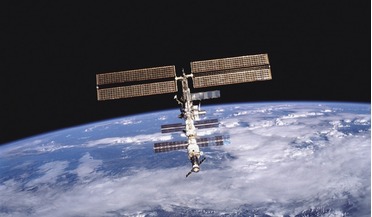 February 2020
Preserving our space heritage
February 2020
Preserving our space heritage
... is because they either re-entered the Earth’s atmosphere long ago and burned up - the fate that befell Sputnik in 1958, for instance - or because they’re still in orbit around the Earth, or sitting on other ...a satellite is still likely to need attitude control and thermal management to maintain its physical integrity in the space environment. There are also hazards ‘up there’ which exhibits in terrestrial museums do not have to endure. Radiation...
 July 2020
Pandemic in space – are we ready?
July 2020
Pandemic in space – are we ready?
... clear-cut obligations and guidelines for states and space operators is essential for the long-term sustainability of space activities Immediately after the launch of Sputnik 1, over six decades ago, scientists and diplomats... met at the UN to discuss not only the regulation of space activities, but also how to...
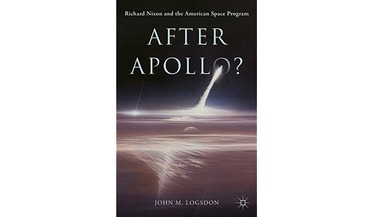 26 February 2018
After Apollo? Richard Nixon and the American Space Program
26 February 2018
After Apollo? Richard Nixon and the American Space Program
... to the delay in this case. Firstly, the author is – as the jacket reminds us – “a world-recognised historian and analyst of space issues” (so no potted histories here!). And secondly, the delay has allowed the author time to consult the... readers from the end of the Apollo era to the ‘What Next?’ Space Shuttle era with some damning analysis on the way. “The space program was not high on Nixon’s policy agenda”, says the author with intentional...
 September 2020
High hopes for Brazil’s space ambitions
September 2020
High hopes for Brazil’s space ambitions
... jobs and incometheir Brazil’s earliest space endeavours date from early in the 1960s when space activities came under the purview of the Air Force. Military oversight of the Brazil Space Program continued until 1994, when it ...was handed over to the newly created Brazilian Space Agency. This was quite a time of change as all players, ...
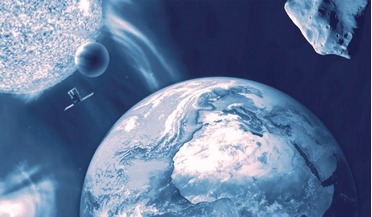 August 2018
AI offers new approach to space situational awareness
August 2018
AI offers new approach to space situational awareness
...words, machine learning is the ability of computer systems to ‘learn’ problem solving without being explicitly programmed. Figure 2: Variational Autoencoders (VAE) designed and trained to learn the contents of X-rayed luggage... example Variational Autoencoders (VAE), we can model the variations of the appearance of a particular space object or a class of space objects. We can also model (or interpolate) a finer variation between objects or types. ...